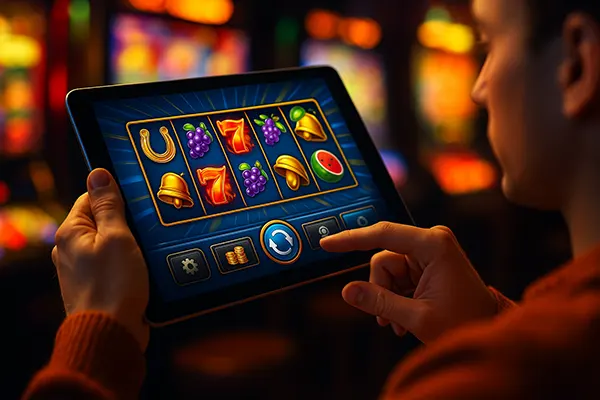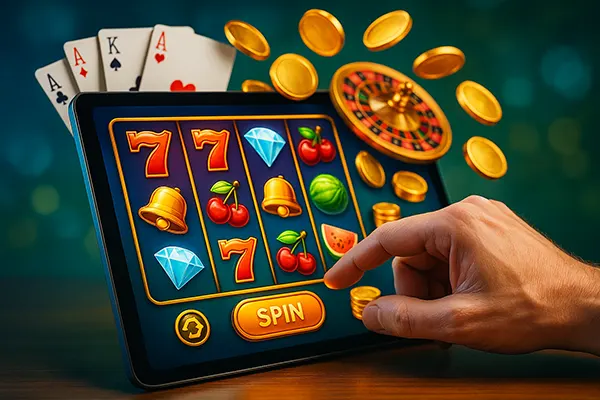
Neuromarketing in Online Casinos: How Interface Design Affects Player Behaviour
The gambling industry has always adapted the latest psychological and technological insights to increase engagement. Neuromarketing, the application of neuroscience and behavioural psychology to marketing, is now a key element in how online casinos structure their interfaces. By understanding the human brain’s reactions to design elements, colours, sounds and visual cues, operators can subtly influence players’ decisions. This article explores how specific interface strategies shape user behaviour and how these methods are applied in modern online casinos as of June 2025.
Emotional Triggers Through Visual and Audio Cues
One of the core techniques of neuromarketing in online casinos is the use of sensory stimuli to create emotional responses. Flashing lights, celebratory sounds, and high-contrast colours are frequently employed to mimic the sensory overload of physical slot machines. These visual and auditory signals are not random — they are engineered to evoke excitement, satisfaction, and the desire to continue playing. For example, when a player wins even a small amount, the interface often triggers a flashy animation with triumphant music, reinforcing the behaviour and encouraging continued engagement.
Modern user interface (UI) design now includes micro-interactions, such as button animations or screen transitions, that are timed perfectly to keep the user in a loop of anticipation and action. These psychological hooks operate below the level of conscious awareness and are designed to activate the brain’s reward system. The goal is to associate gambling with positive emotional outcomes, even in the absence of significant monetary gain.
Additionally, many online casinos now personalise these cues based on user data. A player who tends to respond positively to certain colours or styles may encounter more of them during gameplay. These micro-adjustments, driven by AI, align with neuromarketing principles by targeting emotional triggers that increase session duration and return visits.
The Role of Sound in Decision-Making
Sound design is one of the most underappreciated but powerful tools in shaping player behaviour. The ‘near-win’ sound — a tune that mimics the actual jackpot celebration but subtly signals a loss — is a prime example. It plays on the brain’s reward circuitry, fostering a false sense of progress. This effect is amplified when players use headphones or play in quiet environments, making them more susceptible to sonic manipulation.
Ambient background music also sets the tone for the experience. Calm music may prolong playtime by creating a relaxed mood, while fast-paced music may stimulate impulsive betting during timed promotions or bonus rounds. This manipulation of tempo and tone is rooted in behavioural psychology and is strategically embedded into the interface design.
Moreover, some online casinos allow users to select different audio themes. While this appears to be a feature for player comfort, it is in fact an opportunity for operators to test different sound environments and optimise the ones that generate higher engagement and spending.
Interface Architecture and Cognitive Load
Casino interfaces are designed to reduce the cognitive load on players, making it easier for them to act impulsively. By minimising the number of steps between logging in and placing a bet, developers streamline decision-making. Every click, swipe or animation is engineered to feel intuitive and frictionless. This approach not only improves user experience but also aligns with the ‘System 1’ thinking model — fast, instinctive and emotional — rather than ‘System 2’, which is slower and analytical.
In June 2025, most leading casinos use single-page layouts with fixed navigation menus, autoplay features and prominently placed action buttons. These elements prevent hesitation and facilitate rapid wagering. Interfaces are tested repeatedly using A/B testing to ensure that the layout leads to maximum conversions and retention.
Typography and button hierarchy also play crucial roles. Important actions like “Spin,” “Deposit,” or “Claim Bonus” are made visually dominant, while options for withdrawal or account limits are often de-emphasised. This asymmetric design subtly nudges players toward behaviours that benefit the operator without breaching regulatory frameworks.
Colour Psychology in Gambling Interfaces
Colours carry powerful psychological associations. Red and gold, for instance, are commonly used in Asian-themed slot games because they symbolise luck and wealth. Blue often suggests trust and calmness, making it ideal for account dashboards or KYC verification pages. The strategic use of green on buttons or banners signals ‘go’ or ‘safe,’ encouraging positive reinforcement when a user initiates a bet.
Casinos conduct user testing to identify which colour palettes yield higher engagement metrics. In recent months, some developers have shifted toward using warm tones like amber and coral, which are perceived as inviting and energising. These choices are not accidental — they are grounded in neuroscience research about emotional arousal and attention span.
Beyond static colours, gradient animations and responsive elements are increasingly used to signal interactivity. For instance, a glowing green outline around a deposit button can draw attention without triggering a popup — keeping the user immersed in the flow while gently nudging them toward the desired action.

Personalisation and Behavioural Tracking
Online casinos now integrate machine learning algorithms that tailor the interface to individual player behaviour. This includes adjusting bonus offers, modifying layout themes, or changing button placements based on the user’s interaction history. These adaptive interfaces create the illusion of a customised environment, fostering a sense of familiarity and comfort that encourages repeat visits.
Behavioural tracking is used not only to optimise the interface but also to segment users into profiles. High-risk users, for example, may see more frequent “responsible gambling” reminders, while casual players may be nudged toward low-risk, high-frequency games like virtual roulette or themed slots. This segmentation supports regulatory compliance while maintaining player engagement.
In 2025, data privacy regulations such as the GDPR and Danish Data Protection Act still apply, so casinos are careful to anonymise tracking while maximising personalisation. Nonetheless, the neuromarketing strategy remains clear: a more customised interface is a more persuasive one.
Gamification Mechanics and Loyalty Loops
Gamification is deeply embedded into modern casino interfaces through badges, level-ups, spin streaks, and points systems. These elements, borrowed from video game design, are structured to reward frequent interaction rather than outcomes. The player is rewarded not just for winning but for participating — a strategy that turns routine play into a psychologically gratifying experience.
Progress bars and countdown timers serve as behavioural triggers, pushing users to play just a little more to reach a goal. For instance, a user may see a “Claim your next reward in 2 spins” prompt, which encourages continuation despite recent losses. This aligns with variable-ratio reinforcement models proven effective in both gambling and game development.
Many online casinos now include social leaderboards or invite-only clubs, creating a sense of exclusivity and competition. These gamified features are not simply about fun — they tap into core psychological drivers such as status, achievement and belonging, reinforcing habitual usage of the casino interface.





